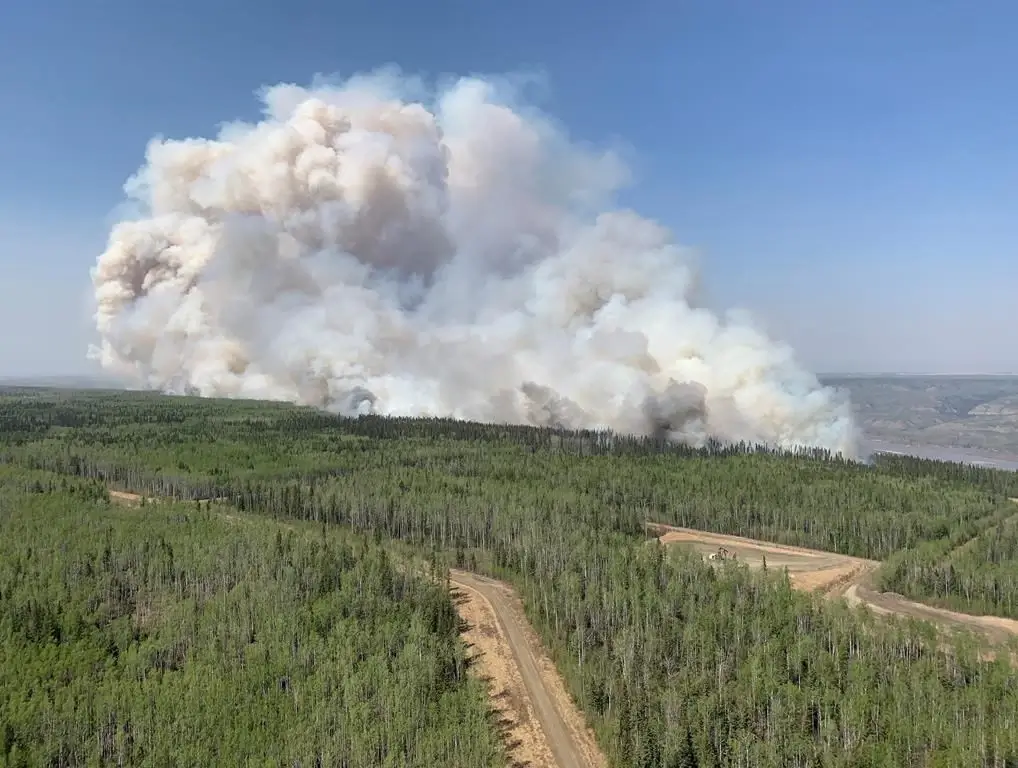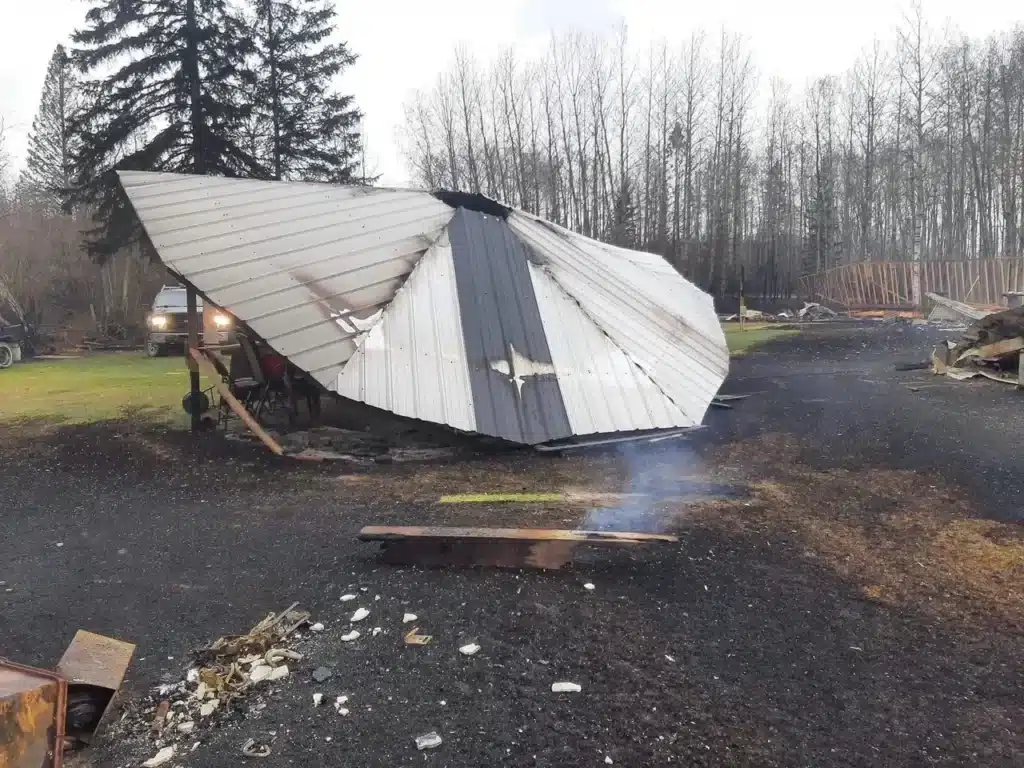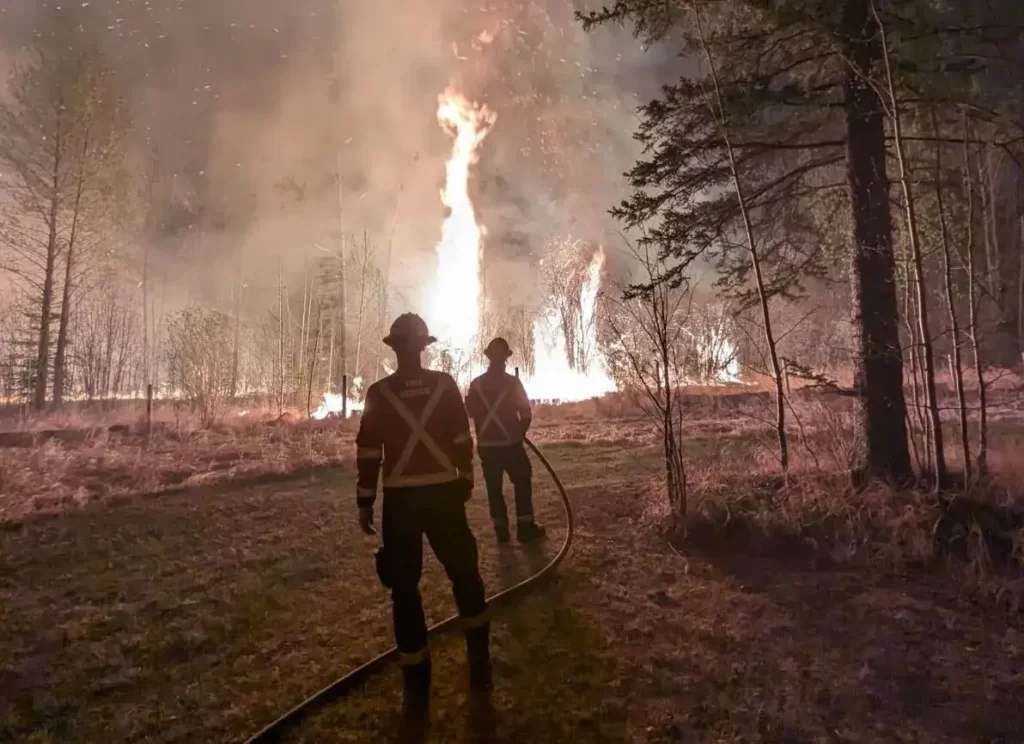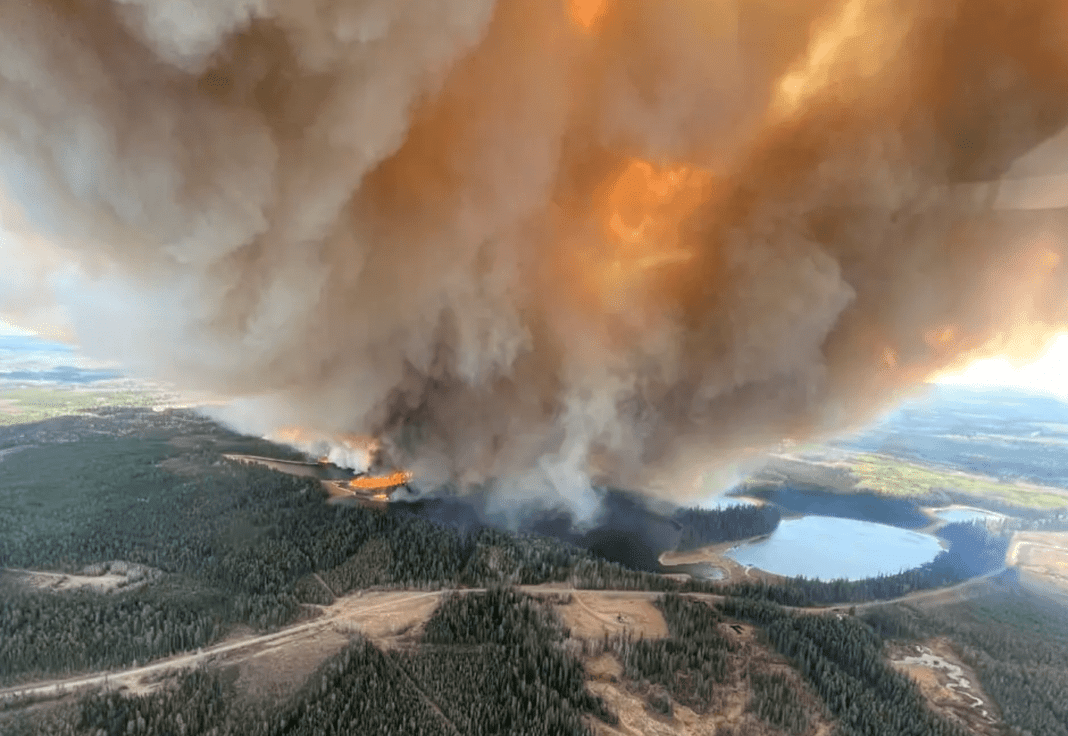Wildfires continue to rage across Alberta’s northern province as hot and dry temperatures, combined with strong winds, fuel the flames.
Global News reports that officials are urging residents in areas expected to experience warm and windy weather in the coming days to remain alert and prepare to evacuate their homes quickly, if necessary, as emergency alerts may be issued.
More than 100 wildfires were recorded in May alone, with 31 classified as “out of control,” leading to the evacuation of almost 30,000 people.
The situation serves as a stark reminder of the unpredictable and powerful nature of wildfires, as noted by Stephen Lacroix, Managing Director of the Alberta Emergency Management Agency.
Alberta has experienced a significant increase in wildfire activity this year, with over 348 fires burning more than 25,000 hectares so far, and many of them believed to have been caused by humans.
As of Monday, Fox Lake, a remote community, has been struggling with a wildfire spanning almost 4,400 hectares that remains out of control.
A team of 55 firefighters, five helicopters, six structure protection crews, and eight pieces of heavy equipment are battling the fire in Fox Lake.
Unfortunately, the response to these wildfires has been hampered by the dismantling and defunding of Alberta Wildfire, the province’s wildfire prevention and firefighting response unit.

Since 2019, the United Conservative Party’s efforts to gut the team have left them inadequately equipped to manage and respond effectively to wildfires in the province, according to Brigadier-General Stephen Lacroix, General Manager of the Alberta Emergency Management Agency.
“Maybe we couldn’t have prevented the starts and rate of spread, but we’re running at a 50% capacity to contain these wildfires,” says a firefighting crew leader currently working on the frontlines of one of the wildfires burning out of control.
“We just don’t have enough resources, period,” he said.
Firefighters across the province faced a challenging situation, with multiple fires raging in various districts. Despite requests for additional resources like air tankers and structural protection teams, the crews were left to tackle the blazes with limited support.

Officials worked hard to allocate resources as efficiently as possible, but the situation remained difficult. “You have to be proactive to be prepared,” a fire crew leader said, “and the government hasn’t been proactive for the four years. We all knew this was going to happen.”
This is not an unprecedented disaster in Alberta’s recent history. For over a decade, nearly identical spring conditions have fuelled catastrophic wildfires. But what is unprecedented is how the government has cut back the department dealing with these sorts of disasters.
In November 2019, the UCP cut funding for a firefighting program in Alberta that had operated for nearly 40 years, training crews to work from helicopters into inaccessible locations to fight fires.
“The decision to eliminate the ‘Alberta Wildfire’ program was made after careful consideration of the specific advantages provided by the rappel crews, the types of wildfires Alberta has experienced in the past, and those we expect to experience in the future,” a government authority said in an email. The crews were used for an initial attack on less than 2% of Alberta’s wildfires.

In 2021, further cuts to ‘Alberta Wildfire’ forced managers to lay off permanent staff at the district level, including wildfire rangers and information officers, who were responsible for educating and informing regional communities about the risks and threats of wildfires.
“To date, some regions remain without a ranger to manage firefighters,” a firefighter based in the boreal forest said.
“Wildfire rangers are now burdened with managing multiple portfolios beyond their own.”
As of last Friday, 13,000 individuals in Alberta were impacted by mandatory evacuation orders. According to the ‘Alberta Wildfire’ dashboard, there are currently 91 active wildfires in the province, with 30 of them being out of control as reported by the government agency






